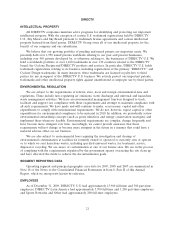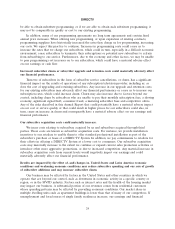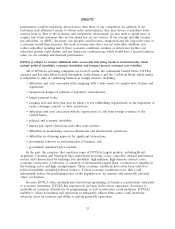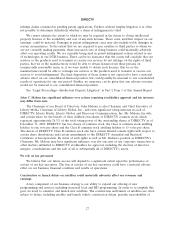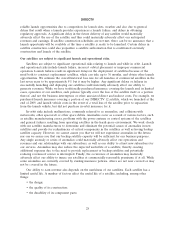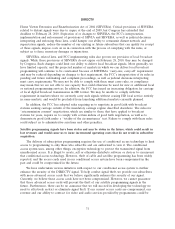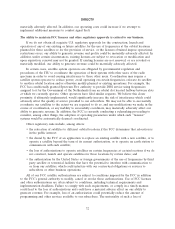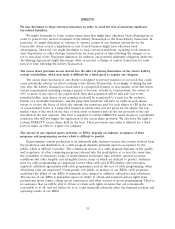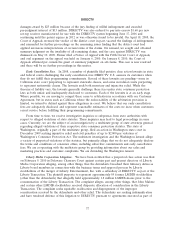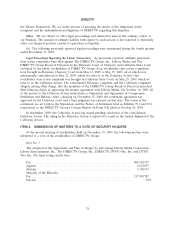DIRECTV 2009 Annual Report Download - page 40
Download and view the complete annual report
Please find page 40 of the 2009 DIRECTV annual report below. You can navigate through the pages in the report by either clicking on the pages listed below, or by using the keyword search tool below to find specific information within the annual report.DIRECTV
reliable launch opportunities due to competition for launch slots, weather and also due to general
delays that result when a launch provider experiences a launch failure, and delays in obtaining
regulatory approvals. A significant delay in the future delivery of any satellite would materially
adversely affect the use of the satellite and thus could materially adversely affect our anticipated
revenues and earnings. If satellite construction schedules are not met, there can be no assurance that a
launch opportunity will be available at the time a satellite is ready to be launched. Certain delays in
satellite construction could also jeopardize a satellite authorization that is conditioned on timely
construction and launch of the satellite.
Our satellites are subject to significant launch and operational risks.
Satellites are subject to significant operational risks relating to launch and while in orbit. Launch
and operational risks include launch failure, incorrect orbital placement or improper commercial
operation. Launch failures result in significant delays in the deployment of satellites because of the
need both to construct replacement satellites, which can take up to 36 months, and obtain other launch
opportunities. We estimate the overall historical loss rate for all launches of commercial satellites in the
last seven years to be approximately 5% but it may be higher. Any significant delays or failures in
successfully launching and deploying our satellites could materially adversely affect our ability to
generate revenues. While we have traditionally purchased insurance covering the launch and, in limited
cases, operation of our satellites, such policies typically cover the loss of the satellite itself or a portion
thereof, and not the business interruption or other associated direct and indirect costs. For example, we
purchased launch insurance covering a portion of our DIRECTV 12 satellite, which we launched at the
end of 2009, and launch vehicle costs in the event of a total loss of the satellite prior to separation
from the launch vehicle, but did not purchase in-orbit insurance for it.
In-orbit risks include malfunctions, commonly referred to as anomalies, and collisions with
meteoroids, other spacecraft or other space debris. Anomalies occur as a result of various factors, such
as satellite manufacturing errors, problems with the power systems or control systems of the satellites
and general failures resulting from operating satellites in the harsh space environment. We work closely
with our satellite manufacturers to determine and eliminate the potential causes of anomalies in new
satellites and provide for redundancies of critical components in the satellites as well as having backup
satellite capacity. However, we cannot assure you that we will not experience anomalies in the future,
nor can we assure you that our backup satellite capacity will be sufficient for our business purposes.
Any single anomaly or series of anomalies could materially adversely affect our operations and
revenues and our relationships with our subscribers, as well as our ability to attract new subscribers for
our services. Anomalies may also reduce the expected useful life of a satellite, thereby creating
additional expenses due to the need to provide replacement or backup satellites and potentially
reducing revenues if service is interrupted. Finally, the occurrence of anomalies may materially
adversely affect our ability to insure our satellites at commercially reasonable premiums, if at all. While
some anomalies are currently covered by existing insurance policies, others are not now covered or may
not be covered in the future.
Our ability to earn revenue also depends on the usefulness of our satellites. Each satellite has a
limited useful life. A number of factors affect the useful life of a satellite, including, among other
things:
• the design;
• the quality of its construction;
• the durability of its component parts;
28





